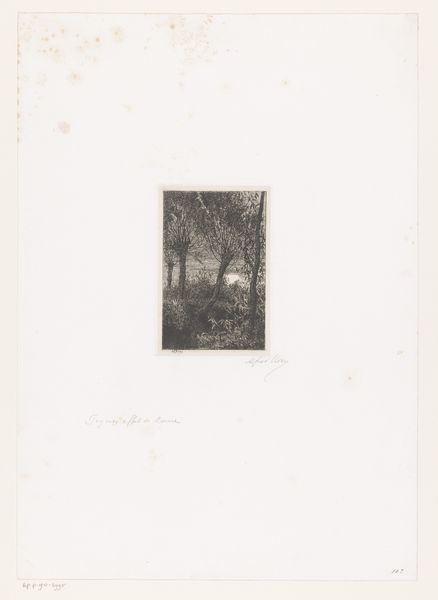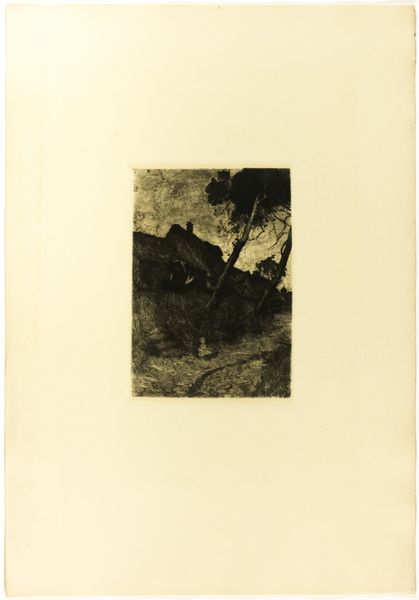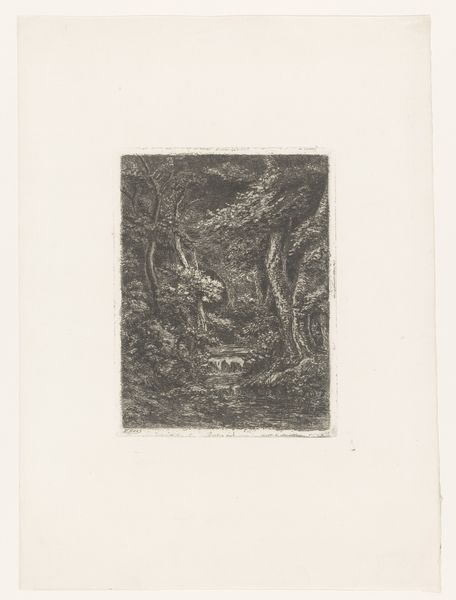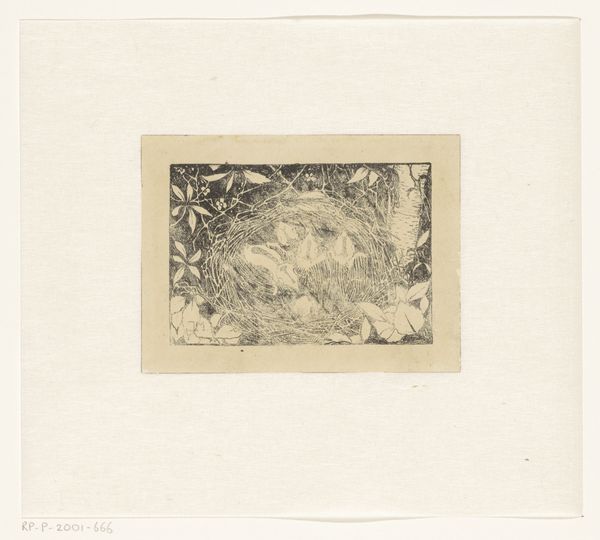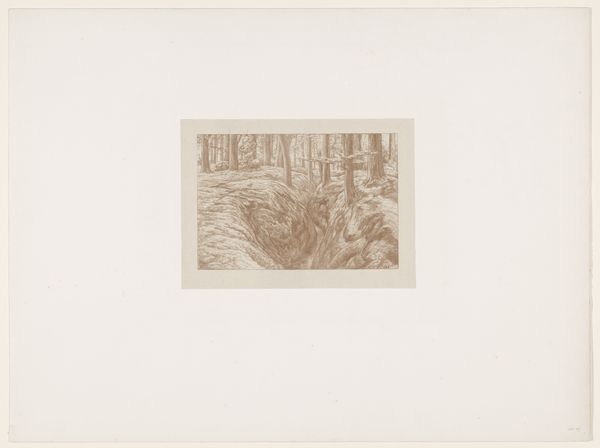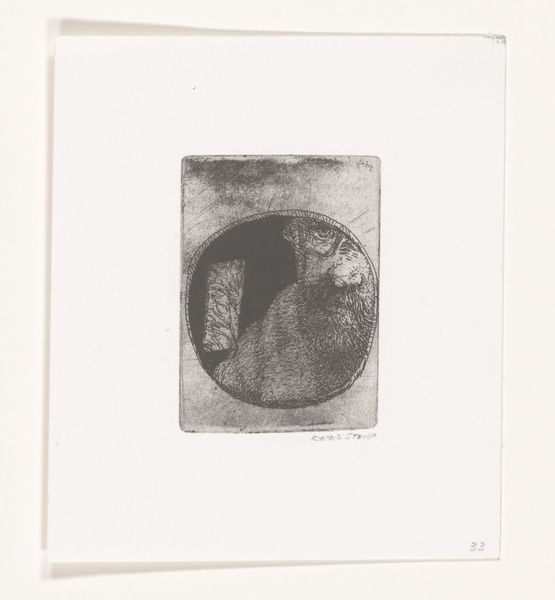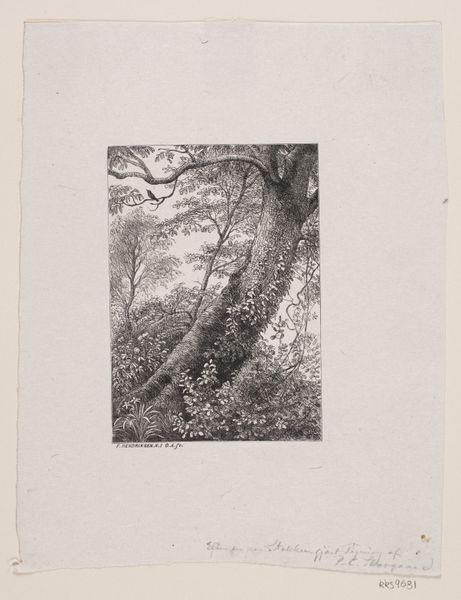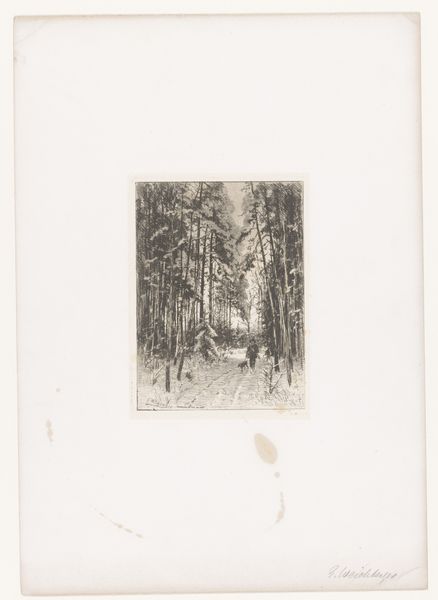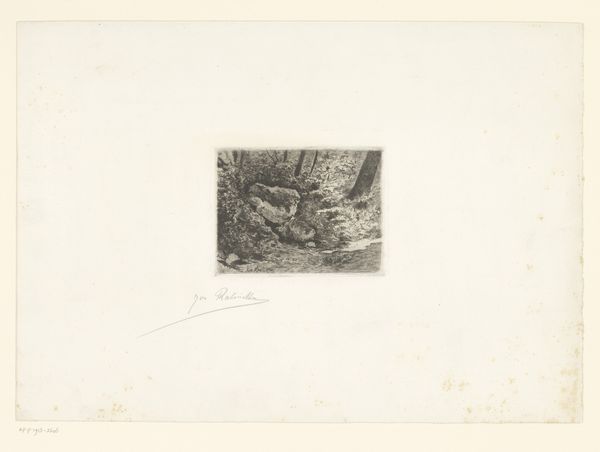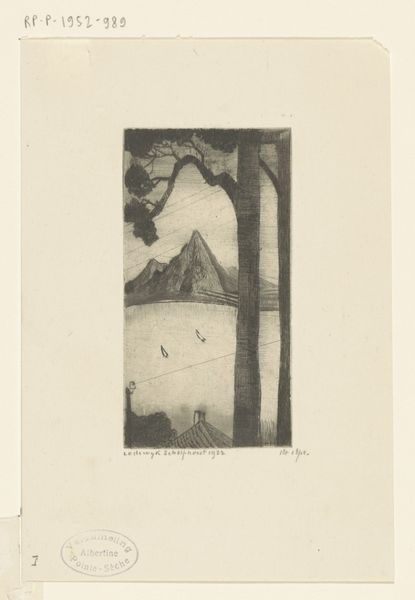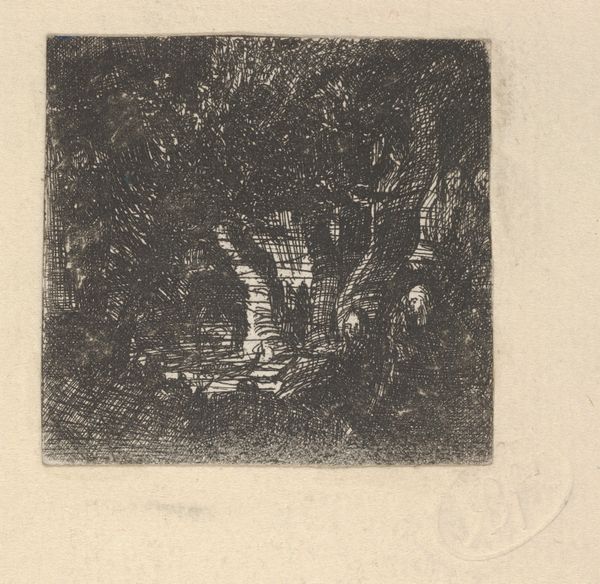
drawing, print, woodcut
#
drawing
# print
#
landscape
#
figuration
#
woodcut
#
line
Dimensions: height 195 mm, width 178 mm
Copyright: Rijks Museum: Open Domain
Curator: Oh, look at this little woodcut by Henri Verstijnen! It's called "Jonge Merels," made sometime between 1892 and 1931. Editor: It has an intense, intimate quality. So stark and brooding. Like looking into a secret. Is it about loss, do you think? Or just…quiet companionship? Curator: "Young Blackbirds" is what the title translates to. The strong contrast of black and white really captures your eye, doesn't it? It simplifies everything to its barest form. Notice how Verstijnen uses lines to suggest light filtering through the leaves and across the birds. Editor: Right, and blackbirds themselves, or "merels," have a rich history in symbolism. They are often messengers, or harbingers of transitions. It's a very elemental piece: birds, a tree, life in miniature rendered as monochrome drama. It evokes deep stirrings for such a little work. Curator: The fact that they're young suggests a sense of potential, doesn't it? An anticipation of what's to come. Plus, blackbirds in Dutch folklore sometimes represented hidden wisdom. I find a kind of sturdy hope in the image. Editor: Hmm, perhaps, I feel its symbolism stretches further into human emotion, it seems concerned with themes of death and mourning too, that shade of melancholic isolation it casts has an enduring grasp, doesn’t it? Curator: Perhaps, but ultimately, it is quite fascinating how two simple black birds in such contrast can offer such profound experiences of both peace and solitude. It really resonates. Editor: Absolutely, yes, its powerful ambivalence truly makes one pause, the shadows whisper untold things. It stays with you.
Comments
No comments
Be the first to comment and join the conversation on the ultimate creative platform.
